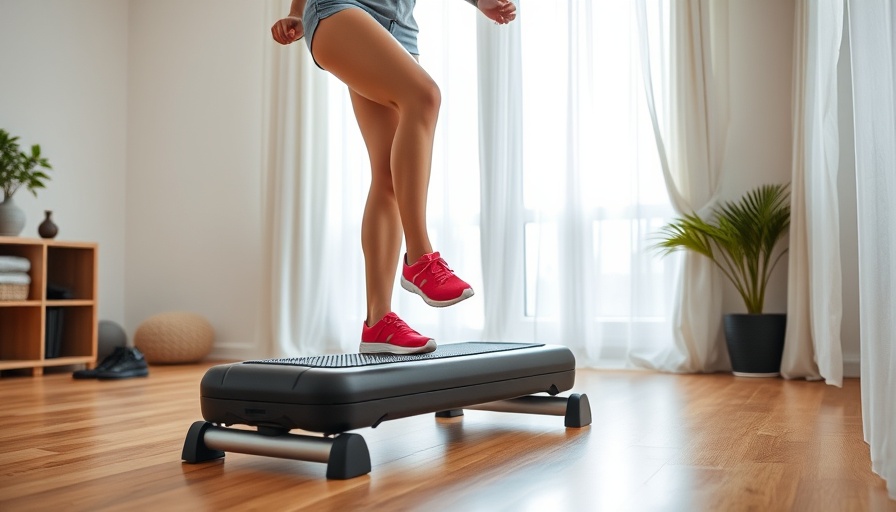
Finding Balance in Strength, Cardio, and Mobility
In a world that often prioritizes speed and efficiency, the importance of balancing strength, cardiovascular health, and mobility cannot be overstated. This week’s motivation from the FB30 30-Day Challenge highlights why these three elements are crucial not just for fitness, but for holistic wellness. Members of the Seventh-day Adventist (SDA) community, deeply rooted in values that emphasize health and well-being, can find particular inspiration in this multifaceted approach.
In Week 4 Motivation – FB30 30-Day Challenge: Strength, Cardio & Mobility, the conversation explores the essential elements of a balanced fitness routine, prompting us to analyze its significance and implications for the community.
Historical Context: SDA Health Principles
The SDA faith has long advocated for health-conscious living, reflecting principles grounded in spirituality and stewardship of the body. From Ellen G. White's writings to current health guidelines, physical fitness is emphasized as part of a broader lifestyle that promotes spiritual, mental, and physical well-being. The FB30 Challenge aligns with these values, encouraging participants to take an active role in their health.
Connecting With Community: Why This Challenge Matters
Participating in fitness challenges like the FB30 fosters social connections that enhance the overall experience. As SDA members often come together in support of one another, whether through church groups or community classes, engaging collectively in physical activity strengthens not just bodies, but also faith bonds.
Balanced Approach: Strength, Cardio & Mobility
Strength training helps build the muscle necessary for daily tasks, ensuring longevity and independence as we age. Cardio is essential for heart health, enhancing circulation and boosting mood through the release of endorphins. Meanwhile, mobility work—such as stretching and yoga—improves flexibility, reduces injury risk, and aids in recovery. The FB30 Challenge's incorporation of all three elements presents a comprehensive pathway towards optimal health.
Future Predictions: Trends in Fitness
As the fitness landscape evolves, we can expect a shift towards more inclusive and integrative approaches. Fitness is no longer a one-size-fits-all regimen but a personalized journey. Challenges that encompass strength, cardio, and mobility will likely gain traction, as they not only address various physical needs but also cater to mental and emotional health.
Counterarguments: The Case for Individual Preferences
While many advocate for a balanced approach, some argue that personal interests should dictate fitness routines. Not everyone finds enjoyment in strength training or mobility exercises. Therefore, there is value in customizing fitness plans to suit individual preferences. However, integrating even a small amount of strength and mobility work alongside preferred cardio activities can yield significant health benefits.
Unique Benefits of the FB30 Challenge
Beyond physical fitness, the FB30 Challenge promotes discipline, resilience, and self-care. Engaging in this challenge can help participants discover personal growth, an understanding of their physical limits, and ultimately, a healthier lifestyle. For SDA members, this can translate into improved living that aligns with their spiritual practices.
Actionable Insights: Getting Started
To make the most of the FB30 Challenge, create a schedule that incorporates a variety of exercises. Set achievable goals—whether it's improving your squat form, increasing cardiovascular endurance, or enhancing your flexibility. Also, consider teaming up with friends within your faith community for support and accountability.
Emotional Perspectives: Feeling Empowered Through Fitness
Fitness often brings a sense of empowerment. For many within the SDA faith, embracing health is not just about physical appearance; it’s about honoring the body. Engaging in activities like the FB30 Challenge fosters self-acceptance and boosts self-esteem, creating a positive feedback loop that enhances overall well-being.
Common Myths About Fitness Routines
Many believe that effective fitness routines require hours of commitment each week. However, one doesn't have to devote a significant amount of time to see results. Even short, focused workouts incorporating various elements—strength, cardio, and mobility—can lead to lasting improvements. Participating in the FB30 Challenge can demonstrate that impactful fitness can fit into busy lives.
Conclusion: Taking Action for Your Health
Participating in the FB30 30-Day Challenge is an empowering way to take control of your physical and mental health. Embrace the journey of strength, cardio, and mobility as essential components of not just fitness, but a fulfilling life. Reflect on how a well-rounded fitness approach resonates with your personal health goals.
As we wrap up this analysis of the importance of comprehensive fitness, consider how incorporating these dimensions into your daily routine can translate into a healthier, happier life. Let’s inspire one another within our SDA community to take active steps toward well-being—starting with the FB30 Challenge!
 Add Row
Add Row  Add
Add 




Write A Comment